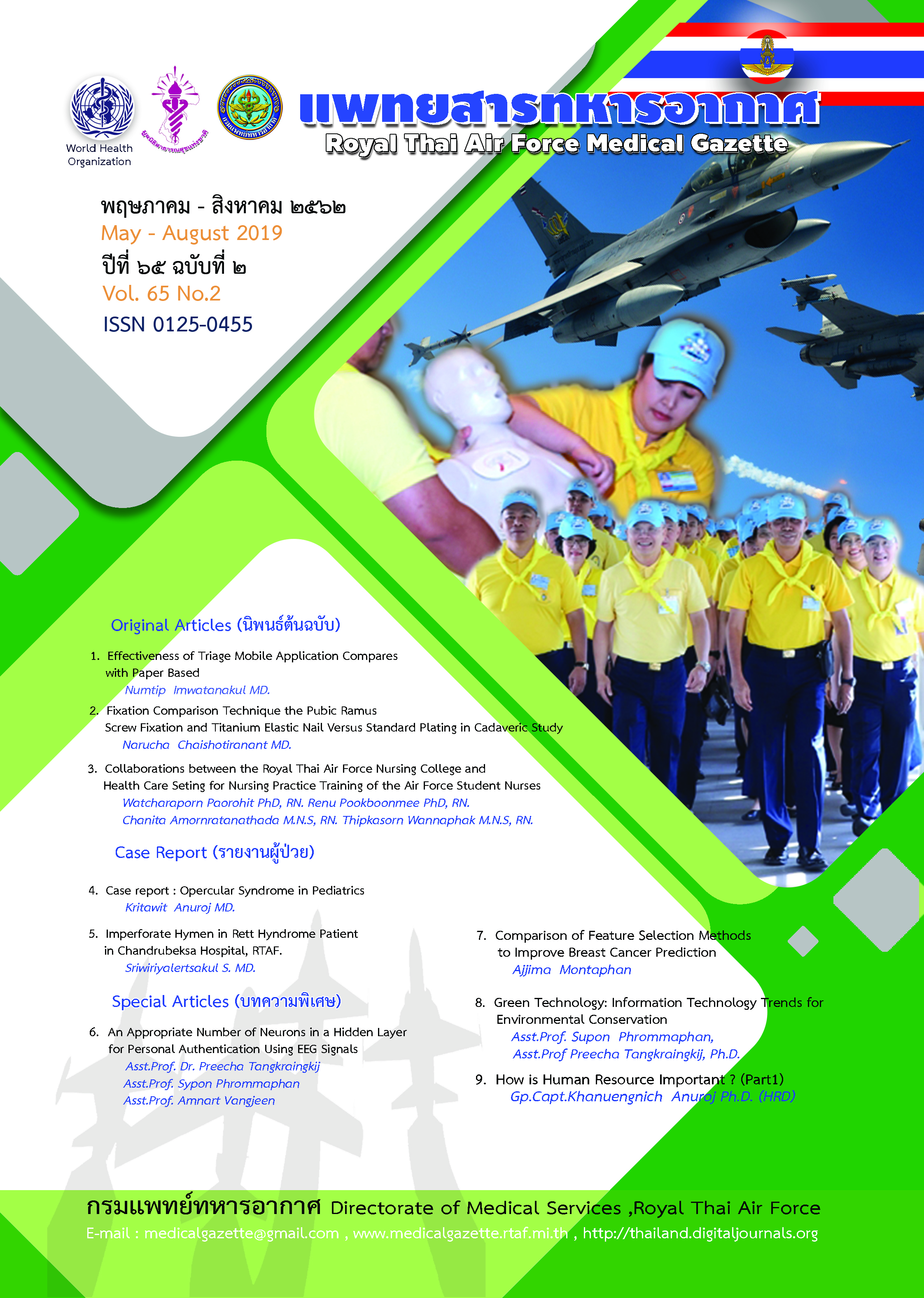Case report : Opercular Syndrome in Pediatrics
Main Article Content
Abstract
Blackground : Opercular syndrome is epilepsy syndrome which uncommon. Patient is presented with oropharyngeal dyskinesia accompanied by aphasia. Electroencephalography revealed slow spike-waves during sleep. Treatment with anti-epileptic drugs or epilepsy surgery may improve the outcome.
Materials and methods : A case report of a girl who had status epilepticus at age of 1 year and 6 months and later develops drooling, difficult swallowing and aphasia. Later has been diagnosed as opercular syndrome is improved with anti-epileptic drugs.
Result : A girl who has diagnosed with opercular syndrome due to status epilepticus resulting in brain damage was diagnosed. Electroencephalogram revealed epileptic activities during sleep. Imaging study shown lesion at opercular region. The patient has been treated with anti-epileptic medications including phenytoin, diazepam, corticosteroid, levetiracetam and lamotrigine. Later, the patient shown clinically improvement.
Conclusion : Opercular syndrome is rare disease. A patient with seizure accompanied by drooling, difficult swallowing and aphasia. Electroencephalogram revealed epileptiform discharge during sleep accompanied
by imaging study shown brain lesion at opercular region. This disease should be considered when the clinical syndrome is presented and should be treated promptly to improve the clinical outcome.
Article Details
บทความที่ได้รับการตีพิมพฺเป็นลิขสิทธิ์ของวารสาร
References
Med. 1837;258-66.
2. Foix C, Chavany JA, Marie P. Diplegie linguomasticatrice cortico-sous-corticale sans
paralysie dsmembres. Rev Neurol. 1926;33:214-9.
3. Thapa L, Raju P, PVS R. Opercular syndrome: Case Report and Review of Literatures.
Neurology Asia. 2010;15(2):145-52.
4. Pascaul-Castroviejo I, Pascaul-Pascaul SI, Pe?a W, Talavera M. Status epilepticus-induced brain
damage and opercular syndrome in childhood. Developmental Medicine & Child Neurology.
1999;41:420-3.
5. Pi?a-Garza JE. Fenichel’s Clinical Pediatric Neurology, 7th edition. Elsevier. 2013.
6. Scheltens-de Boer M. Guidelines for EEG in encephalopathy related to ESES/CSWS in
children. Epilepsia. 2009;50:13-7.
7. Loddenkemper T, Fernandez IS, Peters JM. Continuous Spike and waves During Sleep and
Electrical Status Epilepticus in Sleep. Journal of Clinical Neurophysiology. 2011;28(2):1-11.
8. Vrielynck P, Marique P, Ghariani S, Lienard F, de Borchgrave V, et al. Topiramate in
childhood epileptic encephalopathy with continuous spike-waves during sleep:
A retrospective study of 21 cases. European Journal of Paediatric Neurology. 2017;21(2):
305-11.
9. Desai SD, Patel D, Bharani S, Kharod N. Opercular syndrome: A case report and review.
Journal of Pediatric Neurosciences.2013;8(2):123-5.
10. Jeong A, Strahle J, Vellimana AK, Limbrick Jr. DD, Smyth MD, et al. Hemispherotomy in
children with electrical status epilepticus of sleep. J Neurosurg Pediatr. 2017;19:52-67.
11. Yuan Q, Li F, Zhong H. Early diagnosis, treatment and prognosis of epilepsy with
continuous spike and waves during slow sleep. Int J Clin Exp Med. 2015;8(3):4052-8.


